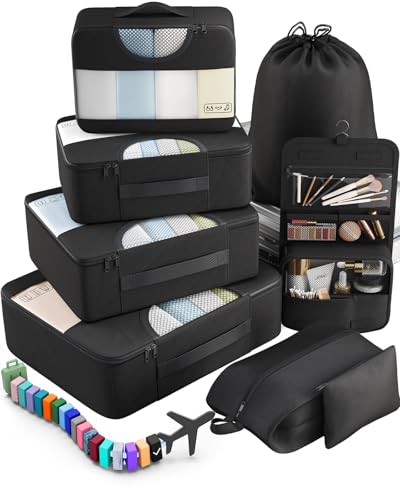In French Polynesia, they use Type C and E power plugs and outlets. The voltage is 230V, and the frequency is 50Hz.
So, you’ll need a travel adapter in French Polynesia. Their plugs and outlets are different from the Type A and B ones we use back in the States.
Quick Overview of the Plugs in French Polynesia:
- Plug type in French Polynesia: C and E
- Standard voltage: 230V
- Frequency: 50Hz
- Need a travel adapter? Yes, you do need a travel adapter
- Need a voltage converter? Might be needed depending on the device
- Recommended plug adapter: Vintar Universal Travel Adapter Kit
All information is gathered from official sources like local power authorities, IEC standards, and firsthand traveler experiences to ensure accuracy.
The Only Travel Adapter You’ll Need in French Polynesia
Not all travel adapters work everywhere. We don’t sell them, but we’ve spent hours comparing the best options for French Polynesia—factoring in voltage, plug types, and reliability. This one came out on top:
Recommended Travel Plug Adapter
by 1,000+ travelers on Amazon
If you’re already traveling or have reached your destination without a power adapter, it’s not a big deal. You’ll probably be able to find one. Still, having your own from the start makes everything just a bit easier and a lot less uncertain.
Travelers heading to French Polynesia often combine their route with other destinations like Australia, Chile, or New Zealand. Plug types may vary, so double-check before you go.
Power Outlets in French Polynesia
In French Polynesia, they use Type C and E power plugs and outlets.
Type C

Type C outlets have two round prongs and no grounding pin. Type E and F plugs usually fit too, but grounded plugs will need an adapter.
Type E

Type E outlets have two round prongs and a grounding pin at the top. Type C and F plugs will also fit.
Do You Need a Voltage Converter?
Since French Polynesia has a different voltage than the U.S. (120V), you’ll probably need a voltage converter to keep your devices running smoothly.
Before using your electronics in another country, always check the voltage rating on the label. If it reads “100-240V, 50/60 Hz”, it will work on both 120V and 220-240V power sources without a converter. This is standard for tablets, laptops, cameras, and rechargeable grooming devices.

Which Travel Devices May Need a Converter?
Want peace of mind while traveling? These top-rated voltage converters are a safe bet.
| Device | Need Converter? | Notes |
|---|---|---|
| Phone | ❌ No (usually) | Most modern phone chargers are dual voltage (100–240V) |
| Laptop | ❌ No (usually) | Check the power brick label for 100–240V |
| Hairdryer | ✅ Yes (often) | High wattage; many models are not dual voltage |
| Electric toothbrush | ⚠️ Check voltage | Some models are 110V only |
| Camera / DSLR | ❌ No (usually) | Most chargers are dual voltage |
| Power bank | ❌ No | Charges via USB, adapter is enough |
| Electric shaver / trimmer | ⚠️ Check voltage | Older or cheaper models may not support 230V |
| Tablet / iPad | ❌ No | All models are dual voltage |
| Portable fan | ✅ Yes (sometimes) | Many models are not compatible with 230V |
| Game console | ⚠️ Check voltage | Newer consoles like PS5 and Xbox are often dual voltage — check to be sure |
| Bluetooth speaker | ❌ No (usually) | Charges via USB |
| E-reader (Kindle, etc.) | ❌ No | USB charging only, no converter needed |
Top Travel Essentials to Pack
Adapters are step one—these items are step two. Simple, useful, and often overlooked, they’re a smart addition to any trip.
Digital Luggage Scale
Packing Cubes
Power Bank
More About French Polynesia
French Polynesia is a wild spread of 118 islands—volcanic peaks, coral atolls, humpback whale hangouts, and colorful reef sanctuaries. Beyond famous spots like Bora Bora, traveler favorites include Raiatea’s sacred marae, Taha’a’s vanilla fields, and Tetiaroa, once Marlon Brando’s private paradise turned eco-resort.
There’s no snakes here—just 800 unique fish species waiting to swim alongside you while snorkeling or diving. Surf lovers will want Teahupo’o, with some of the world’s most legendary, heart-stopping waves. Traditional culture thrives too: rhythmic Tahitian dance, visceral community chants, and the rare tiare apetahi flower that only grows on one mountain in Raiatea.
Though remote, French Polynesia is easy to reach by plane from L.A. or Honolulu, and Air Tahiti hops you between islands. It’s part of France, so you’ll find French-Tahitian culture, guesthouses offering local warmth, and a scene that’s both luxe and laid-back.
Many travelers visiting French Polynesia also explore nearby islands like Cook Islands and New Zealand.




